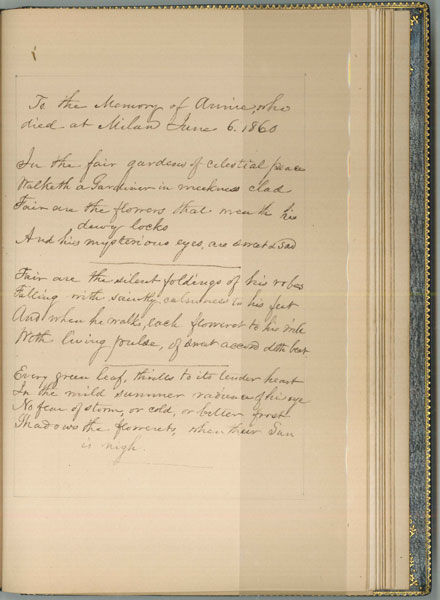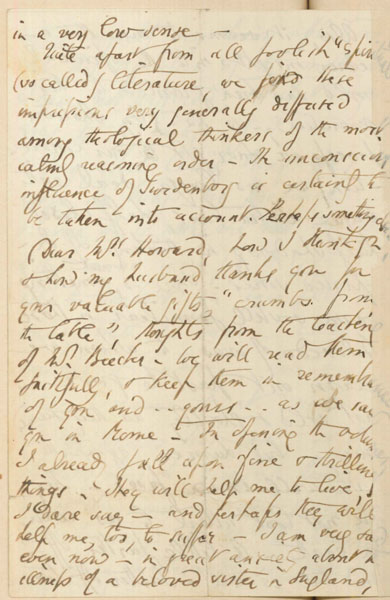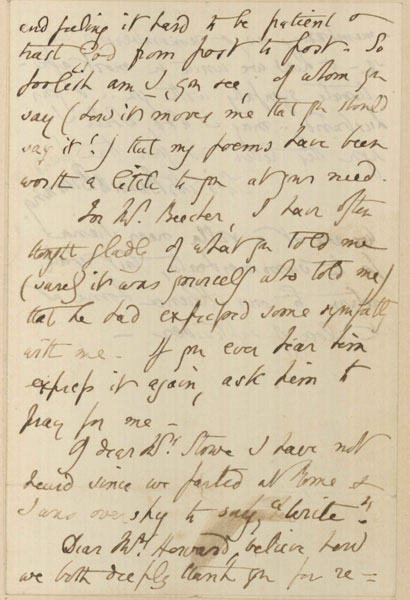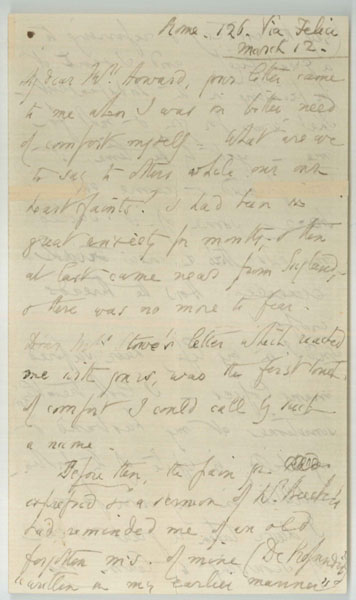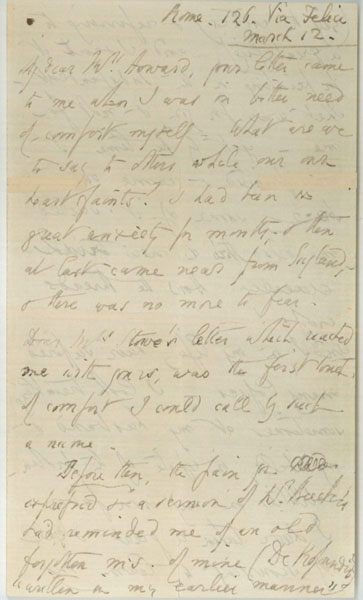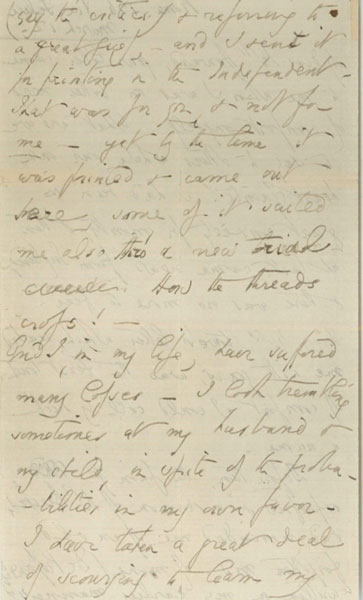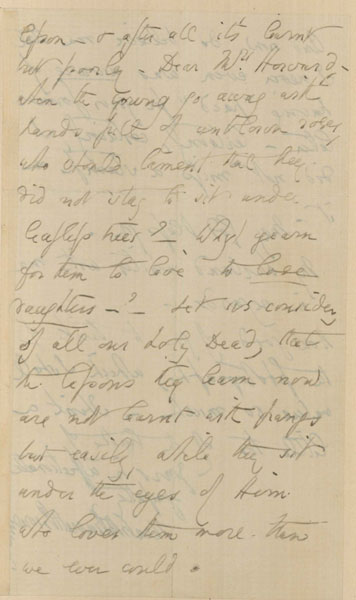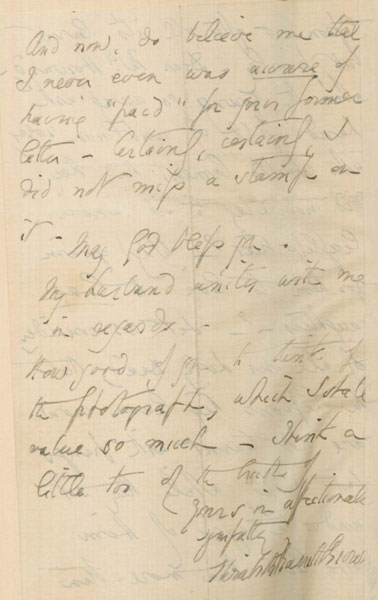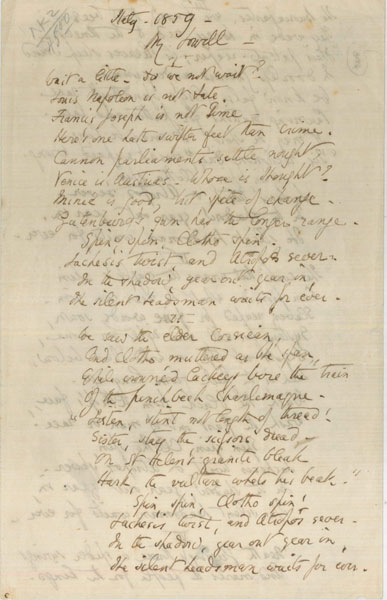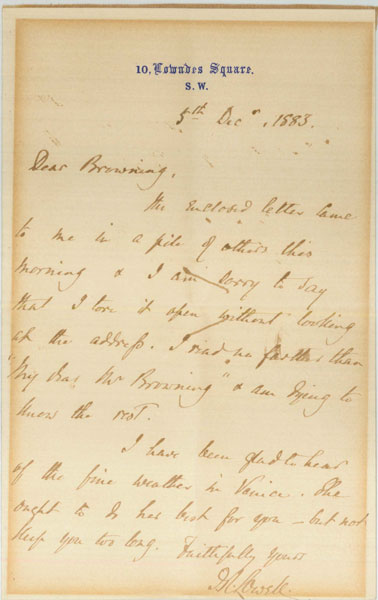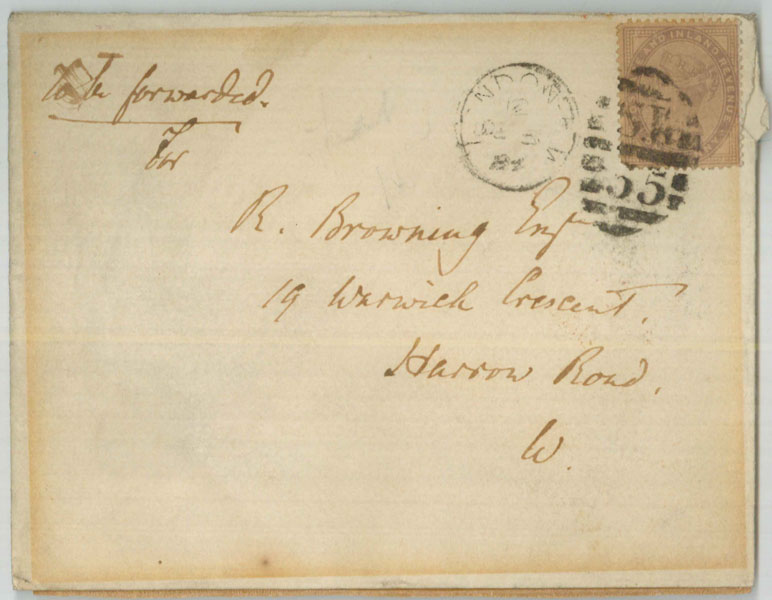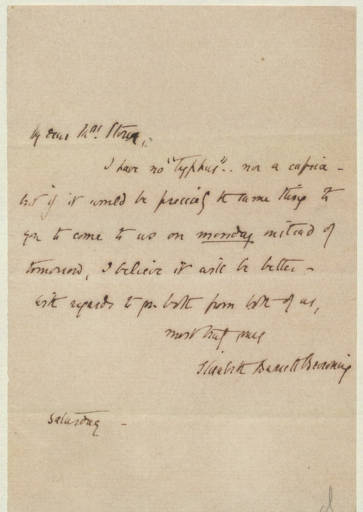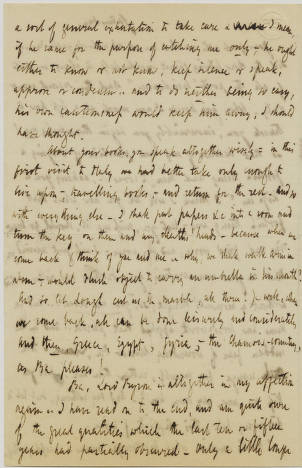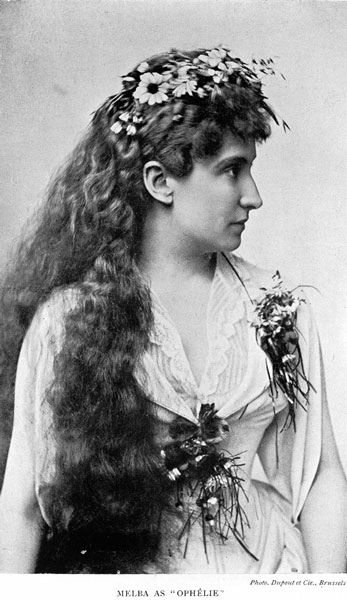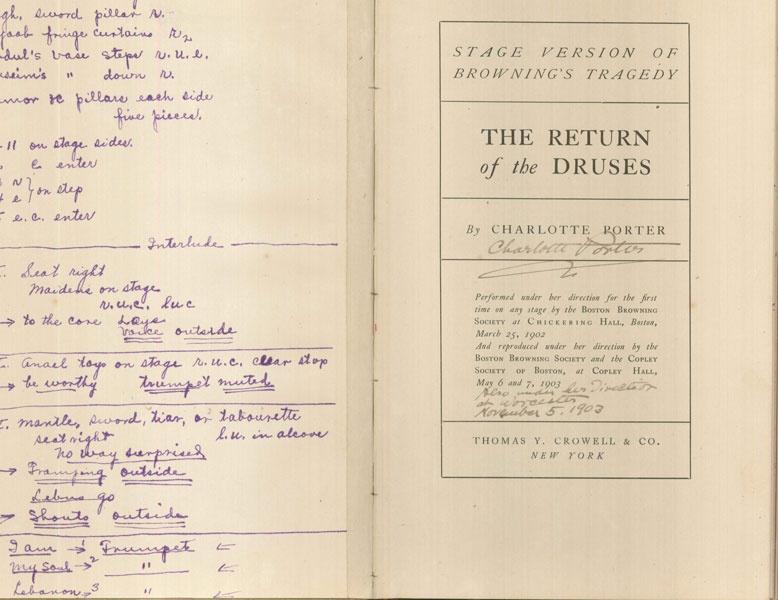
As the new season of Downton Abbey begins, I thought I should bring you up to date on the discoveries that have resulted from my investigation into Robert Browning’s visits at Highclere Castle.
My curiosity about Browning at Downton Abbey led me to begin a correspondence with David Rymill, archivist for both the Hampshire Record Office and the Highclere Estate. Mr. Rymill’s research revealed that there were three previously unrecorded Browning letters among the Earl of Portsmouth’s archives, a carte de visite of Browning in an album of photographs from Highclere Castle, and four signatures of Robert Browning in the Castle’s guest books.
Among the three letters from Robert Browning are two letters to Lady Portsmouth, Lady Eveline Alicia Juliana Herbert, first daughter of Henry John George [Herbert], 3rd Earl of Carnarvon. She married Isaac Newton Fellowes Wallop, 5th Earl of Portsmouth and became Lady Portsmouth.The other letter is to her daughter, Lady Catherine Henrietta Wallop, who married the Right Honorable Charles George Milnes-Gaskell.
These letters, which are part of the Wallop Papers in the Hampshire Record Office, were provided by the Earl of Portsmouth through David Rymill.

Robert Browning to Lady Portsmouth, 14 May 1877
Courtesy of the Earl of Portsmouth



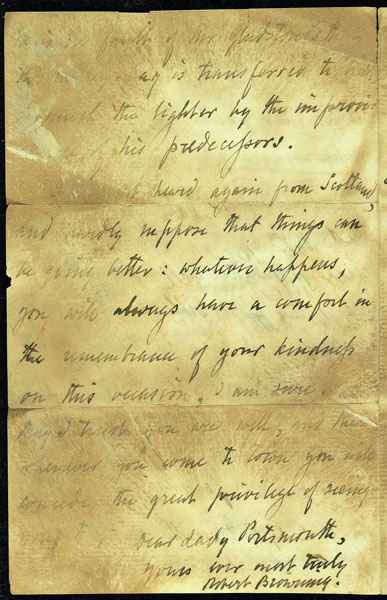
Robert Browning to Lady Portsmouth, 14 January, 1870
Courtesy of the Earl of Portsmouth
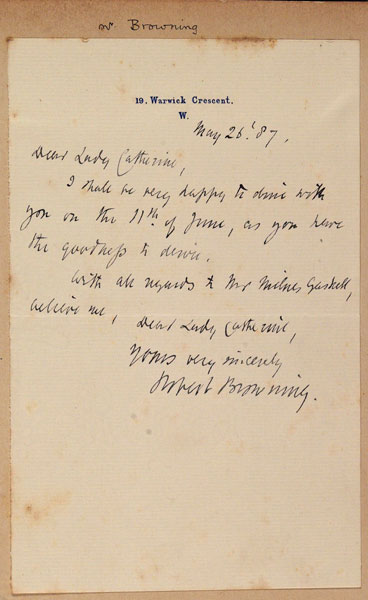 Robert Browning to Lady Catherine, 26 May, 1887
Robert Browning to Lady Catherine, 26 May, 1887
Courtesy of the Earl of Portsmouth
Lord Carnarvon gave permission for Mr. Rymill to send the Armstrong Browning Library scans of Robert Browning’s signatures in the Highclere Castle guestbooks. These occur on December 13, 1869, November 16th and 21st of 1873 and March 10, 1878. This discovery has already helped scholars more accurately date Robert Browning’s chronology.

Highclere Castle Guestbook, 13 December 1869
Courtesy of the Earl of Carnavon, Highclere Castle Archives
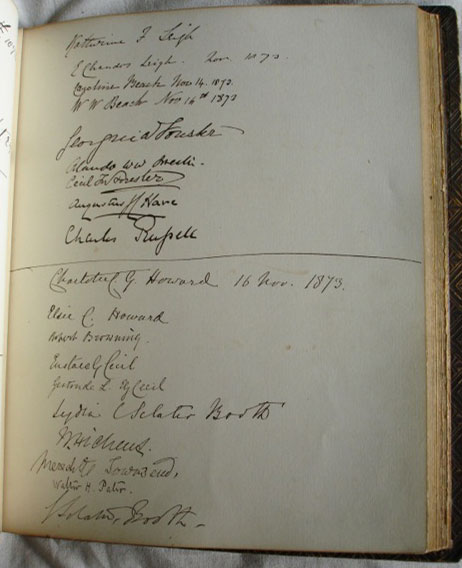
Highclere Castle Guestbook, 16 November 1873
Courtesy of the Earl of Carnavon, Highclere Castle Archives


Highclere Castle Guestbook, 21 November 1873
Courtesy of the Earl of Carnavon, Highclere Castle Archives

Highclere Castle Guestbook, 10 March 1878
Courtesy of the Earl of Carnavon, Highclere Castle Archives
A signed photograph of Robert Browning was also discovered in an album among the castle archives, and a scan was graciously forwarded to the ABL from Lord Carnarvon.

Courtesy of the Earl of Carnavon, Highclere Castle Archives
I would like to express my sincere thanks to David Rymill. On December 2, Cynthia Burgess, Librarian/Curator of Books and Printed Materials at the Armstrong Browning Library, and Pattie Orr, Vice-President of Information Technology and Dean of University Libraries, Baylor University, were joined by Mr. Rymill as they attended a ceremony at the grave of Robert Browning in Westminster Abbey, commemorating his death on December 12, 1889, one hundred and twenty-four years ago.
Who knows what connections the new season might bring to light?
Melinda Creech
Notes and Queries:
Can anyone add additional information about the signatures in the guestbooks or the other photographs on the album page?
Letter from Robert Browning to Edward Oliver Wolcott.



